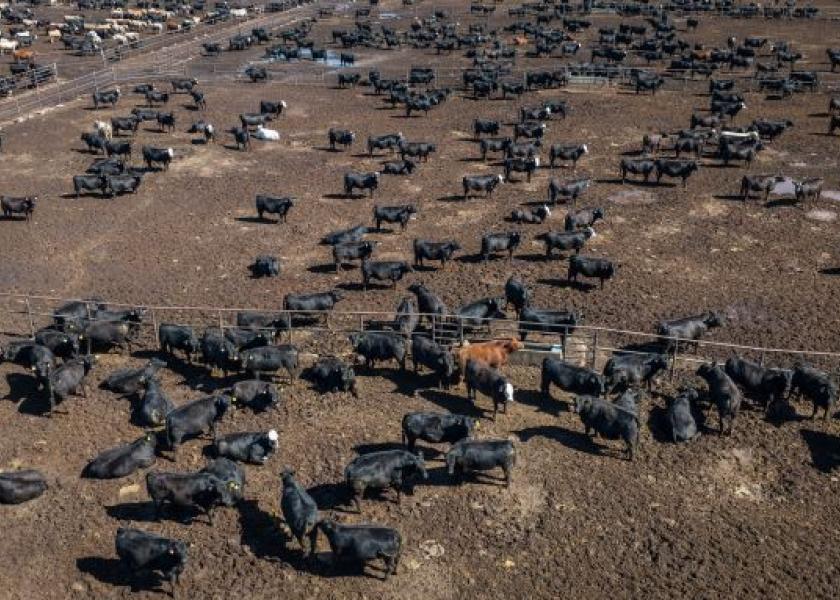Nalivka: Production Decisions Led by the Market not the Government

Over the last 12 months, I have noted that the scope of programs announced by USDA seem to be increasingly aimed at putting the government in charge of U.S. food production. More specifically, with regard to the beef industry, I would strongly submit that current government funding programs with the purported goal of strengthening the U.S. beef industry are at odds with the dynamics of the industry. The industry and the consumer are better served by market-led agricultural production decisions – period.
Production capacity and efficient, cost-effective utilization of that capacity is key to the production of affordable, accessible beef beginning with the producer and continuing through processing, distribution, and final point of sale to the end-consumer. As the value chain and value-added production becomes increasingly the focus of attention, the complicated topic of capacity can and often is the center of discussion amongst cattlemen. Generally, the catalyst to the conversation of capacity is packer concentration and that has now captured the attention of the U.S. Congress and evolved into committee hearings and USDA funding of new capacity.
Forage and economics are the driving forces to the cattle cycle and any adjustment to either can only be made as markets send signals to the supply chain. I don’t intend to get too deep into the weeds with numbers, but numbers are important. My analysis of the impact of drought and low producer returns on cow-calf production over the past 2 years, suggests the cattle inventory will be down 3% at the beginning of 2023 and about equal to the herd tally at the beginning of 2015. How did we get there?
Big picture – for all of 2022, I am projecting (we have actual slaughter through October) the industry will slaughter 34.4 million total cattle or 37.4% of this year’s U.S. cattle herd. This would the highest percentage of the herd slaughtered on record (my database goes back over 100 years). Of the total slaughter, my projected total cow slaughter of 7.1 million this year will account for 18% of the total cowherd. I am projecting beef cow slaughter to end the year at 4.1 million, up 11.5% from prior year. This would be slaughtering 13.4% of the beef cowherd, the highest percentage since 1984! Through October, the industry has already slaughtered 10.9% of the beef cowherd compared to 9.4% a year ago and 10.6% in 1984.
So, let’s take a look at heifers. I don’t break slaughter between dairy and beef heifers, but I think it’s pretty safe to assume that the increase in slaughter this year was driven by beef heifers going to the feedlot rather than being bred. Through October, heifer slaughter at 8.5 million represented 43% of the heifer inventory at the beginning of this year that weighed over 500 lbs. and is the highest since 2004. For all of 2022, I am projecting heifer slaughter at 10.5 million representing nearly 53% of this year’s beginning tally.
Bringing this year’s sharp liquidation back to the issue of packer capacity, this year’s slaughter will leave average capacity utilization at 89.6% compared to 89.1% in 2021. I would strongly suggest that there is no severe shortage of capacity and perhaps, capacity has been confused with ownership or control.
A projected 3% drop in the size of the total cattle herd at the beginning of 2023 will result in the available supply of cattle – fed steers and heifers and cows – to be slaughtered to be down nearly 7% from 2022 – largely cows and heifers. Fed cattle slaughter in 2023 at 25 million will leave average fed plant capacity utilization for 2023 at 84.4% using current my Sterling estimated capacity figure.
In 2015, when total cattle slaughter dropped to 28.8 million representing 32.2% of the inventory, average utilization of fed cattle plant capacity fell to just over 80% with fed cattle slaughter at just over 23 million.
There are two very important questions given the situation that I have just described. First, will there be the willingness and/or ability to rebuild U.S. cattle herds back to at least the previous high? Second, will new plants coming on line over the next 2 to 3 years survive relatively low utilization with significant debt and rising operating costs? I think the answer to the first question is surrounded with a great deal of uncertainty (weather and the cow-calf financial picture) and I don’t think throwing taxpayer dollars at the cow-calf sector will ease the uncertainty. Government involvement in the red meat industry beyond food safety, market reporting, and trade relations only hinders market-driven signals.







